Six Chesapeake Bay animals best seen in winter
Get your winter critter-fix by learning about these six beautiful Bay animals that are most common during our coldest months.
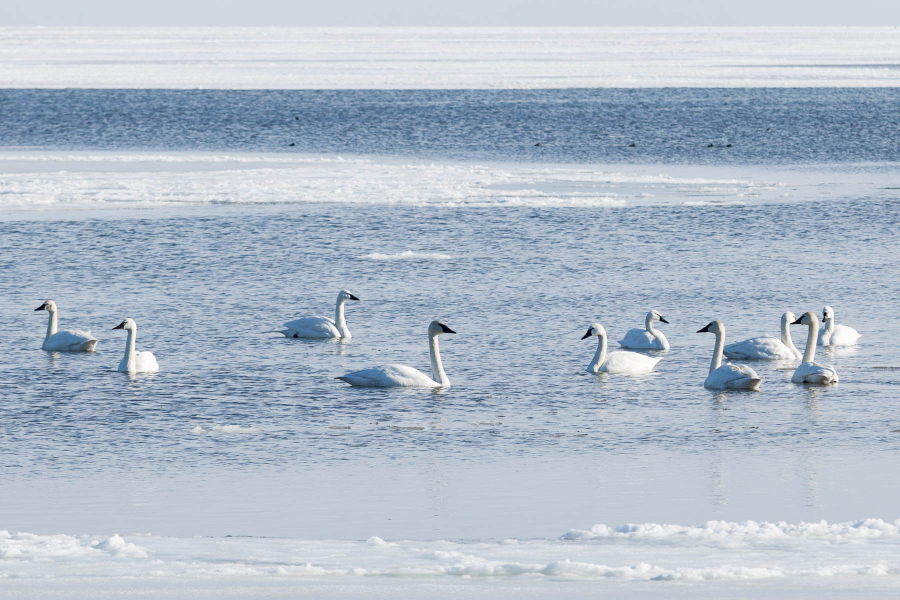
The sky is gray, the wind blows cold, and all the earth seems devoid of life. It’s winter in the Chesapeake Bay region. But if you venture outside, you’ll likely catch a glimpse of many critters that are most common during the coldest months. Some of these animals only visit our region this time of year. (That’s right – they actually like our winters!)
Get your winter critter-fix by learning about these six beautiful Bay animals. Then leave us a comment letting us know about your favorite wintering Chesapeake Bay critter!
1. Lion's mane jellyfish
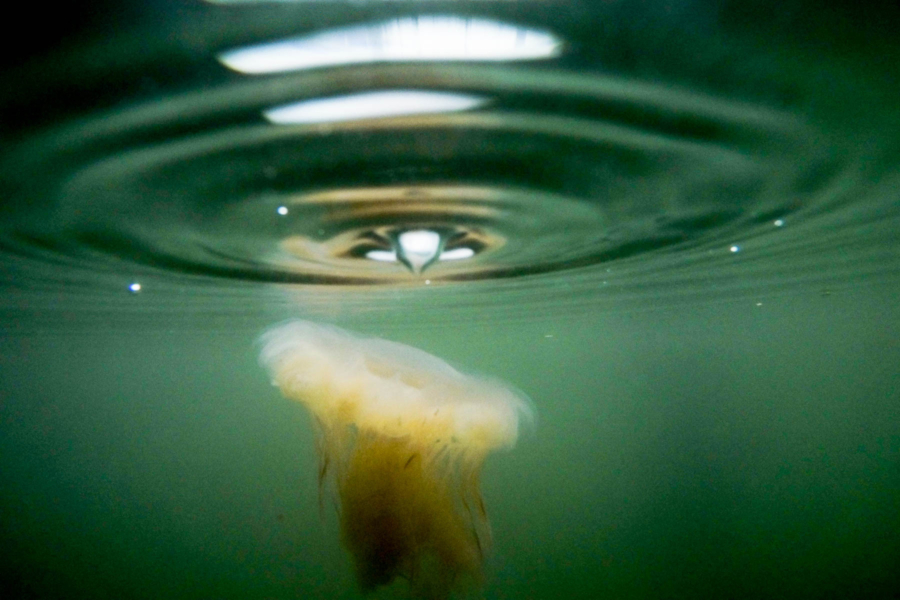
Chesapeake Bay locals experience their fair share of sea nettle stings during summer swims. But very few have been stung by a lion's mane jellyfish: the largest known jellyfish species in the world!
Luckily these jellyfish only visit the Bay from January to April but if you're doing a Polar Bear Plunge, be careful!
Lion’s mane jellyfish prefer to hang out in the northern latitudes, and travel to the Bay in the winter because of cold waters. The further north you travel, the larger the lion’s mane jellyfish becomes! The largest recorded specimen washed up along a beach in Massachusetts in 1870, had a bell (body) with a diameter of 7.5 feet and tentacles 120 feet long.
2. Tundra swan
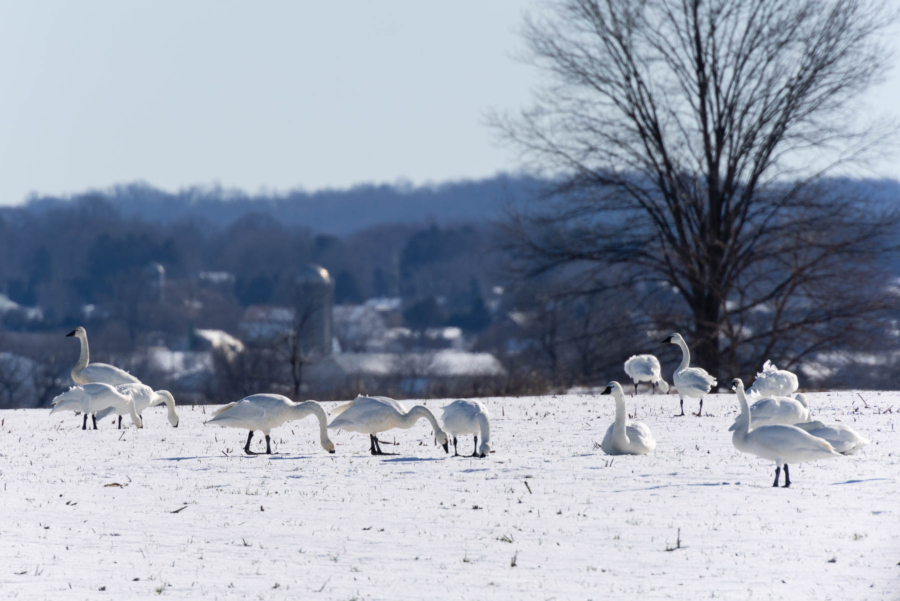
Sure, it gets cold here in the winter, but it’s even colder in the Arctic! That’s why these beautiful white waterfowl take refuge in the Chesapeake Bay from late October to March.
Tundra swans, also known as whistling swans, breed in the Arctic and subarctic tundra's pools, lakes and rivers. They fly in a V formation at altitudes as high as 27,000 feet before arriving at their wintering habitat, which is usually coastal marshland and grassland.
Looking for a place to view tundra swans? The coast is best, but if you're inland, you may be in luck, too! Last winter, Tundra Swans were spotted at Eastern Neck Wildlife Refuge in Rock Hall, Maryland and the Patuxent Wildlife Research Refuge in Laurel, Maryland.
3. Bald eagle
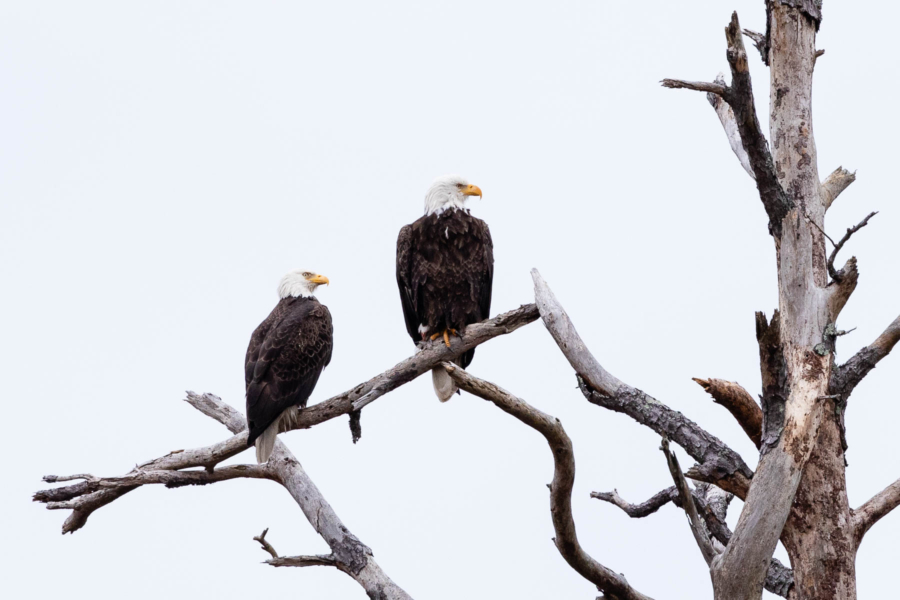
The bald eagle is not only the national emblem of the United States, but also the face of an environmental movement born out of its near extinction.
Pesticides (particularly DDT) and increased development left this beautiful raptor on the brink in the mid-20th century. But bald eagles have since made a remarkable comeback, enough so that the federal government removed them from the "threatened" species list in 2007.
Winter provides an excellent opportunity to view bald eagles. They are often found perched on the highest branch in loblolly pine forests, scouting for prey in nearby fields and wetlands.
Although these birds prefer areas that are not human-heavy, one bald eagle family moved into Harlem in New York City last February. Areas closer to the Bay, like Blackwater National Wildlife Refuge and the Conowingo Dam, are excellent places to view bald eagles in big numbers.
4. Canvasback
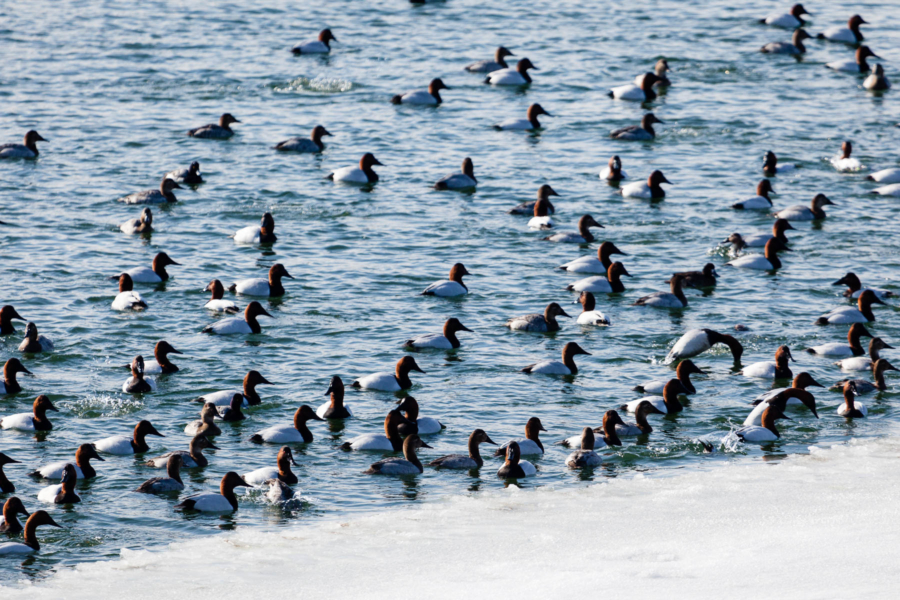
If you see large, reddish-brown heads out on the Bay this winter, they may be canvasbacks! These diving ducks spend winter in the Chesapeake Bay before returning to the Prairie Pothole region to breed.
Why do they fly across the Mississippi River Valley to splash around in the Chesapeake all winter? One reason may be food: the canvasback was named for its fondness of wild celery. However, diminished populations of wild celery and other bay grasses has meant decline in "can" populations, too.
In the 1950s, the Chesapeake Bay was home to 250,000 wintering canvasbacks – about half of the entire North American population. Today, only about 50,000 winter in the Bay. But these numbers seem to be increasing.
You may be able to spot "cans" in places like Pickering Creek Audubon Center in Easton, Maryland and York River State Park in Williamsburg, Virginia.
5. Bobcat
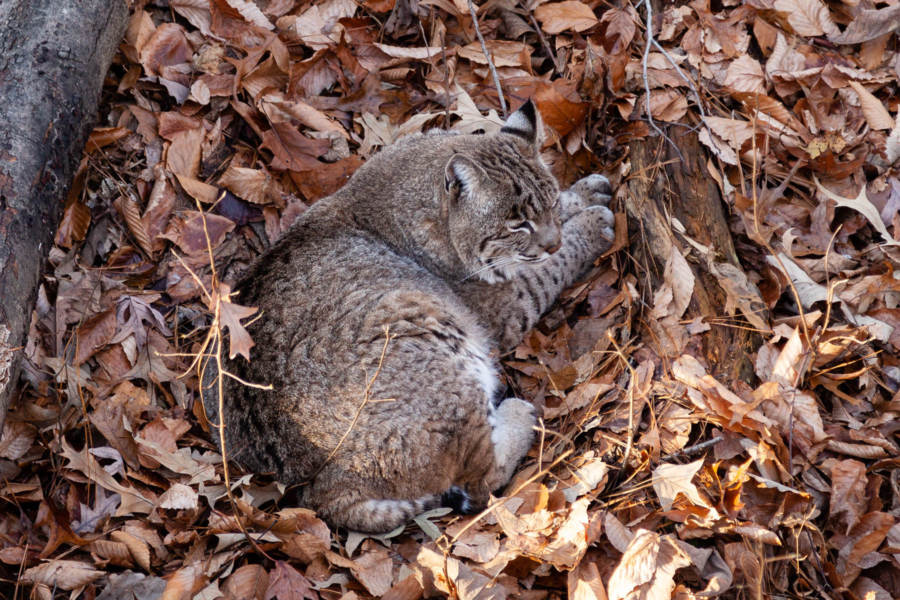
Unlike most mammals, bobcats don't hibernate during the winter. In fact, female bobcats increase their home range during the coldest time of year, meaning there's a greater chance one will end up near you! These cats start breeding between January and March, when males begin travelling to visit females.
These winter warriors have padded paws, which act like snow boots to protect them from the cold weather. They are excellent hunters and are most active during dusk and dawn, often travelling between 2 and 7 miles in one night!
Bobcats may be found in Spruce Knob and Seneca Rocks National Recreation Area, Mason Neck National Wildlife Refuge, and other natural areas in the northern and western portions of the watershed.
6. Northern cardinal
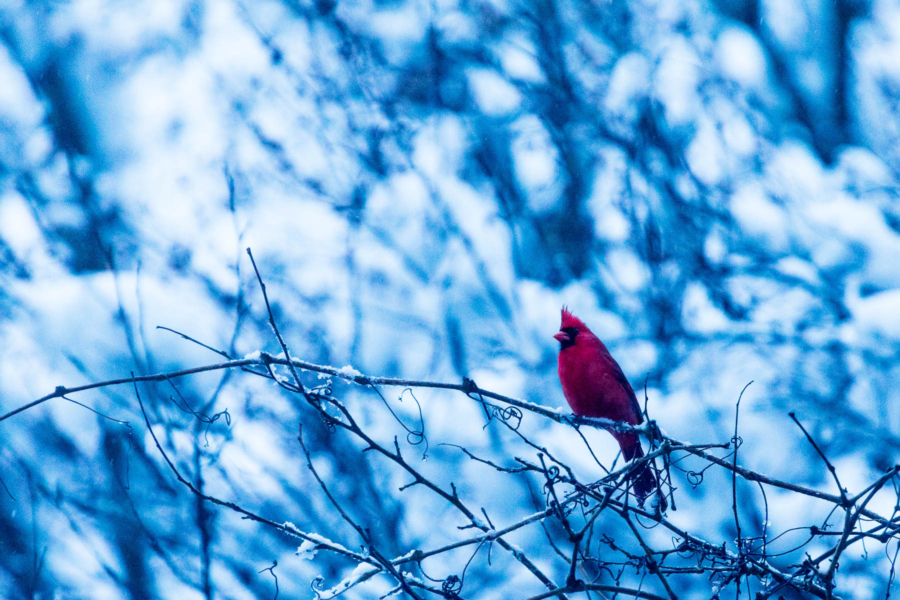
A brilliant flash of red can brighten up any dreary winter scene. The northern cardinal is known for its red plumage that, unlike other bird species, never dulls.
The female cardinal is one of the only female birds that sings, telling the male what to bring back to the nest for their young. In the winter, cardinals can be seen foraging for seeds in dense shrubs near the ground, usually in pairs.
Since they do not participate in winter migrations, these little red birds are permanent members of the Chesapeake Bay. This means that there are plenty of year-round opportunities to catch a glimpse!

Comments
I can't wait to see the lions mane jelly fish
Did you know that bobcat is named for its tail, which appears to be cut or “bobbed."?
I live on the water, Cheaspeake Bay at Chester river and saw for the first time a jelly fish ? dark in color on the top approx: 4" across the top with rather long Tentacles and many small ones on 3/15/18. What is the name of this one? Rather early for jellyfish.
this is my first time seeing a lions' mane jellyfish, and boy are they cute!
Just saw 6 small lions mane jelly fish in the bay at Saunders Point. They had orange/tan centers and short streamers. I had never heard of a winter jelly fish until I googled to your site.
I saw for the first time in 50 years on the Bay what I figure was the Lion's Mane Jellyfish. How spectacular--of course I didn't even have my cell phone/camera with me. The bell was more pink than the one in the photo, but at least 6" across. The tentacles were short, but I imagine that was due to its being in only 10" of water near the shore. It was alive and pulsing strongly. I hope to see one again!
i love the pictures of the animals of the Chesapeake Bay and they are so awesome to look and i was wonding if u can email back with more pictures of the animals in the Chesapeake Bay
thank u so much
rebecca rhoades
Thank you!
Your comment has been received. Before it can be published, the comment will be reviewed by our team to ensure it adheres with our rules of engagement.
Back to recent stories